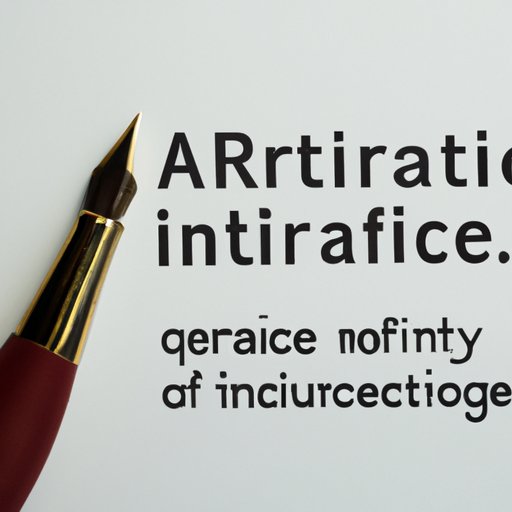Introduction
Legal writing involves the use of terms that are specific to the field of law. One such type of term is a “term of art”, which can be difficult for non-lawyers to understand. A term of art is a word or phrase that has a specific meaning within a particular area of law. It may have a different meaning than its literal interpretation, and understanding these differences is key to mastering legal writing.
Definition of Term of Art in Legal Writing
A term of art is a word or phrase that has a precise legal meaning in a particular context. This meaning may differ from the literal interpretation of the word or phrase outside of the legal context. For example, the term “will” typically implies a desire to do something in everyday language, but in the legal world it carries an entirely different meaning. In this context, a “will” is a legal document that outlines a person’s wishes regarding their estate and assets after they die.

Purpose and Context of the Term in Legal Writing
Terms of art are used in legal writing to provide clarity and precision when discussing complex topics. Using terms of art helps avoid confusion and misinterpretation by providing a consistent language for lawyers and other legal professionals. Terms of art are typically used in statutes, contracts, court opinions, and other legal documents. They are also commonly used in legal briefs, memoranda, and other written arguments.

Distinguishing Similar Terms in Legal Writing
When writing about legal topics, it is important to be able to distinguish between similar terms of art. This can be done by outlining the differences between the terms and providing examples of each. For instance, the terms “contract” and “agreement” are often used interchangeably, but they have distinct meanings in the legal context. A contract is a legally binding agreement between two or more parties, while an agreement is a more general term that can refer to any kind of arrangement between two or more parties.
Consequences of Misusing or Misunderstanding the Term
Using the wrong term of art or misunderstanding the meaning of a term can have serious legal implications. Misusing or misunderstanding a term of art can lead to confusion or misinterpretation of the law, which can have serious financial or legal consequences. For instance, if a contract is drafted using the wrong terms or with an incorrect understanding of the meaning of a term, the contract may be unenforceable or invalid.

Tips on Researching the Term Further
If you are unsure of the meaning of a term of art, there are several sources you can consult to get a better understanding of the term. The most authoritative source of information is the applicable statutes and case law. Statutes are laws passed by legislatures, while case law consists of court opinions that interpret statutes. Additionally, there are many books and online resources available that provide definitions and explanations of legal terms.
When researching a term of art, it is important to use reliable sources and employ effective strategies. Start by searching for the full phrase or a precise definition so you can be sure you are getting accurate information. Additionally, pay attention to the context in which the term is used, as this can help you better understand its meaning. Finally, if possible, consult with a lawyer or other legal professional to ensure you are interpreting the term correctly.
Conclusion
Terms of art are an important part of legal writing, and it is essential to understand their specific meanings in order to effectively communicate in the legal context. By outlining the differences between similar terms and providing examples, as well as researching the term further and consulting with a lawyer, you can ensure that you are accurately interpreting and using the term.
(Note: Is this article not meeting your expectations? Do you have knowledge or insights to share? Unlock new opportunities and expand your reach by joining our authors team. Click Registration to join us and share your expertise with our readers.)
